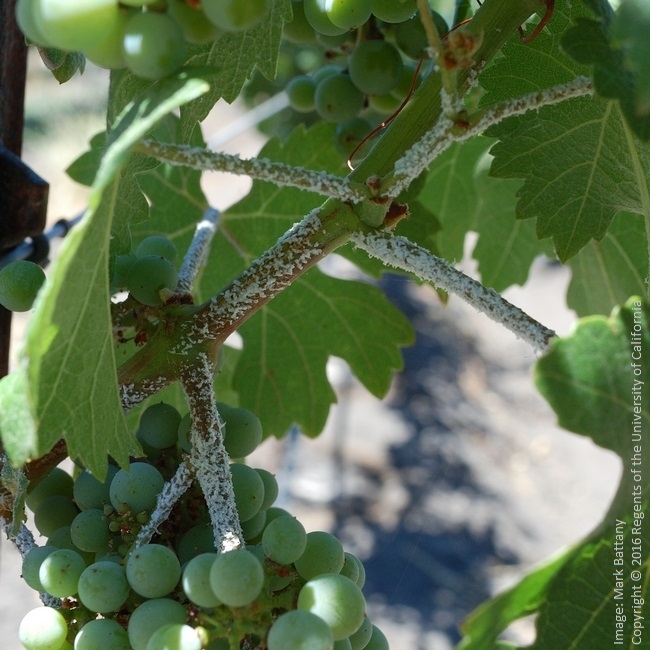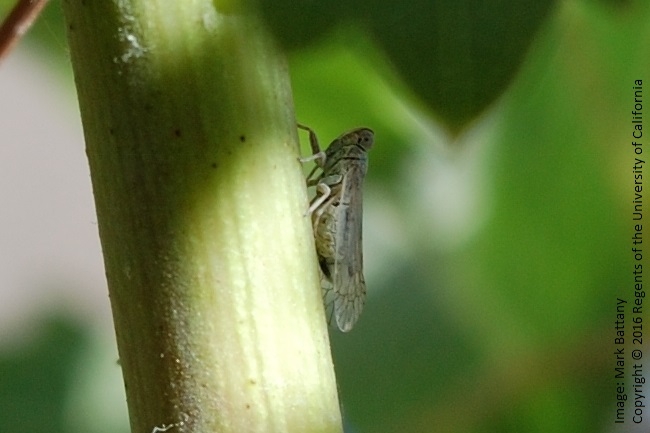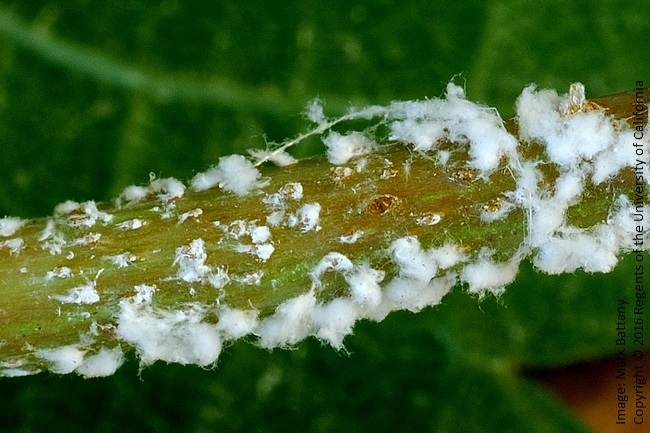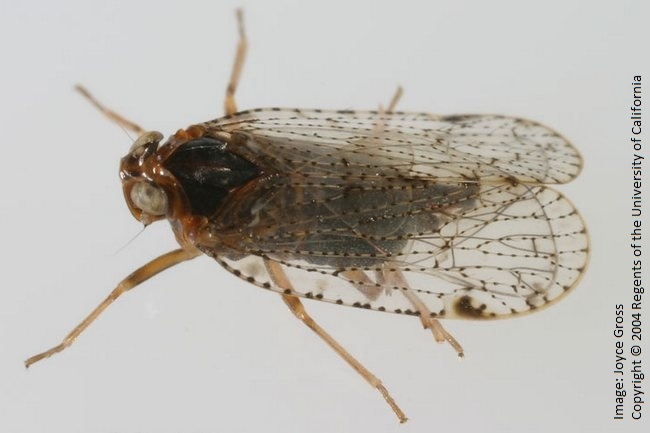Recently a number of area growers have been noticing unusual white residues on their vines. These residues are marks of egg-laying by small planthopper insects of the Cixiidae family. In some vineyards the egg-laying activity is very substantial, resulting in large amounts of white residue on dozens of vines (Figure 1). These residues may be confused with the presence of mealybugs or scale insects.
The planthopper adult female lays eggs by making an incision into the epidermal tissue of grape shoots, petioles, leaf veins, and the cluster rachis. In the process of laying the eggs the female leaves behind a tuft of white waxy fibers which remain attached to the vine (Figure 2).
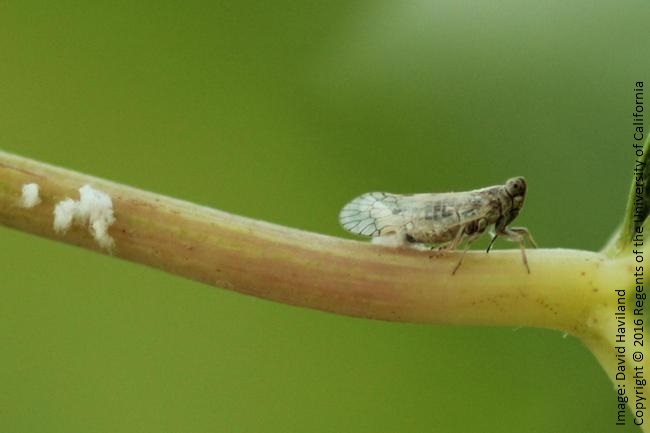
After the nymphs hatch they drop to the ground and move into the soil to feed on the vine roots. The adults can feed on the vine leaves and in the process will excrete a sticky honeydew, which can then form black sooty mold as it rots. In the North Coast these planthopper insects have one generation per year; it is unknown if this is the case in the warmer parts of the state as egg-laying has been observed in August in Kern County.
Many different planthopper species exist in the Cixiidae family. Adult planthopper specimens collected recently from vines in San Luis Obispo County (Figure 3) have been identified as Oecleus balli. The planthopper Cixius cultus has been identified on vines in the North Coast.
These planthopper insects have not been considered to be pests in vineyards. However given that this insect has been appearing in unusually high numbers at some sites on the Central Coast where it has not been observed before, it would be prudent to be aware of it and recognize the signs of its activity. Planthoppers of the Cixiidae family have been evaluated as potential vectors of the Red Blotch virus, but so far they have not been shown to transmit the virus.
If you see similar signs of heavy planthopper egg-laying in vineyards in San Luis Obispo or Santa Barbara County, please contact mcbattany@ucanr.edu.
